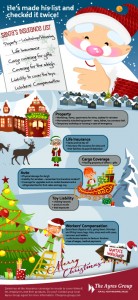Buying a condo? What you need to know about insurance
Buying a condo is similar to buying a house. Your mortgage company will probably require you to buy condo insurance. But how do you know how much insurance you need?
Typically, condominium associations own and insure the outside structure of a condominium building, including the grounds and other features, such as a pool or tennis court. Most often, a condo owner is responsible for everything from the drywall in (wall coverings, floor coverings, cabinetry, etc.) The insurance term used to identify the condo unit’s interior finishes is Additions and Alterations or A&A. Similar to the cost to rebuild a home used for a homeowner policy (coverage A), the A&A covers the structural finishes and features; it does not include your furnishings or personal property.
ADD UP THE COSTS
When trying to determine the amount of coverage you need to replace the Additions and Alterations (interior finishes) of your condo, you will want to take into consideration anything attached to a wall or floor. You should include the cost of all wallcoverings (including paint), floor coverings, interior doors, trim-work, bookcases, built-in cabinetry, appliances, plumbing fixtures and electrical fixtures.
However, some condominium associations cover both the exterior and structural interior finishes of the building (A&A completed by the association at the time of purchase), with the exception of your personal property and furnishings. The bylaws or agreements of your condo association stipulate what part of the structure the association is responsible to replace in a loss and what part of the unit the condo owner is responsible to replace. Ask your attorney to review the contract before you buy.
REVIEW THE MASTER CONDO POLICY
By carefully reviewing your condo association’s master insurance policy, you will know how much you are responsible to replace and can get a good idea of how much coverage you may need. Make sure your insurance policy covers everything not covered in the association’s policy, such as improvements and alterations to your unit. You also need to value your personal items to determine how much coverage you need for contents; doing a home inventory will help you track your possessions. Don’t forget to include unique or expensive items, such as artwork or jewelry. Ask your insurance agent whether you need separate personal articles coverage to protect all your valuable items.
It is also important to review your loss assessment obligations. For example, if a fire damages part of a condominium building’s common areas, each condo owner is then assessed (charged) money to cover some of the cost of the repairs. Some condo insurance policies may provide coverage to help you recover some of your assessment.
Your Ayres Group Agent can help you review coverage options to meet your needs. Contact them today!

